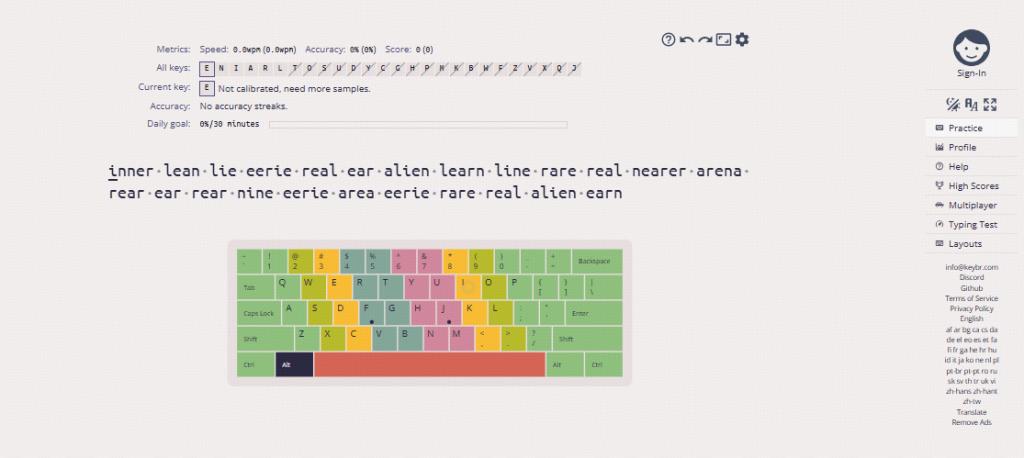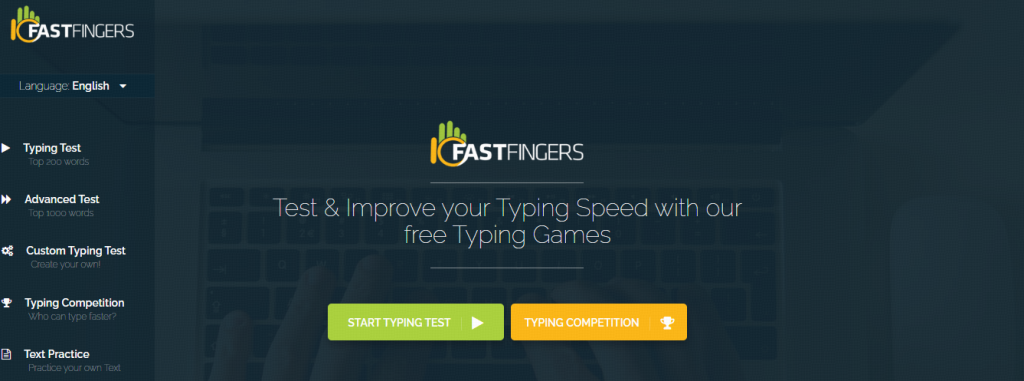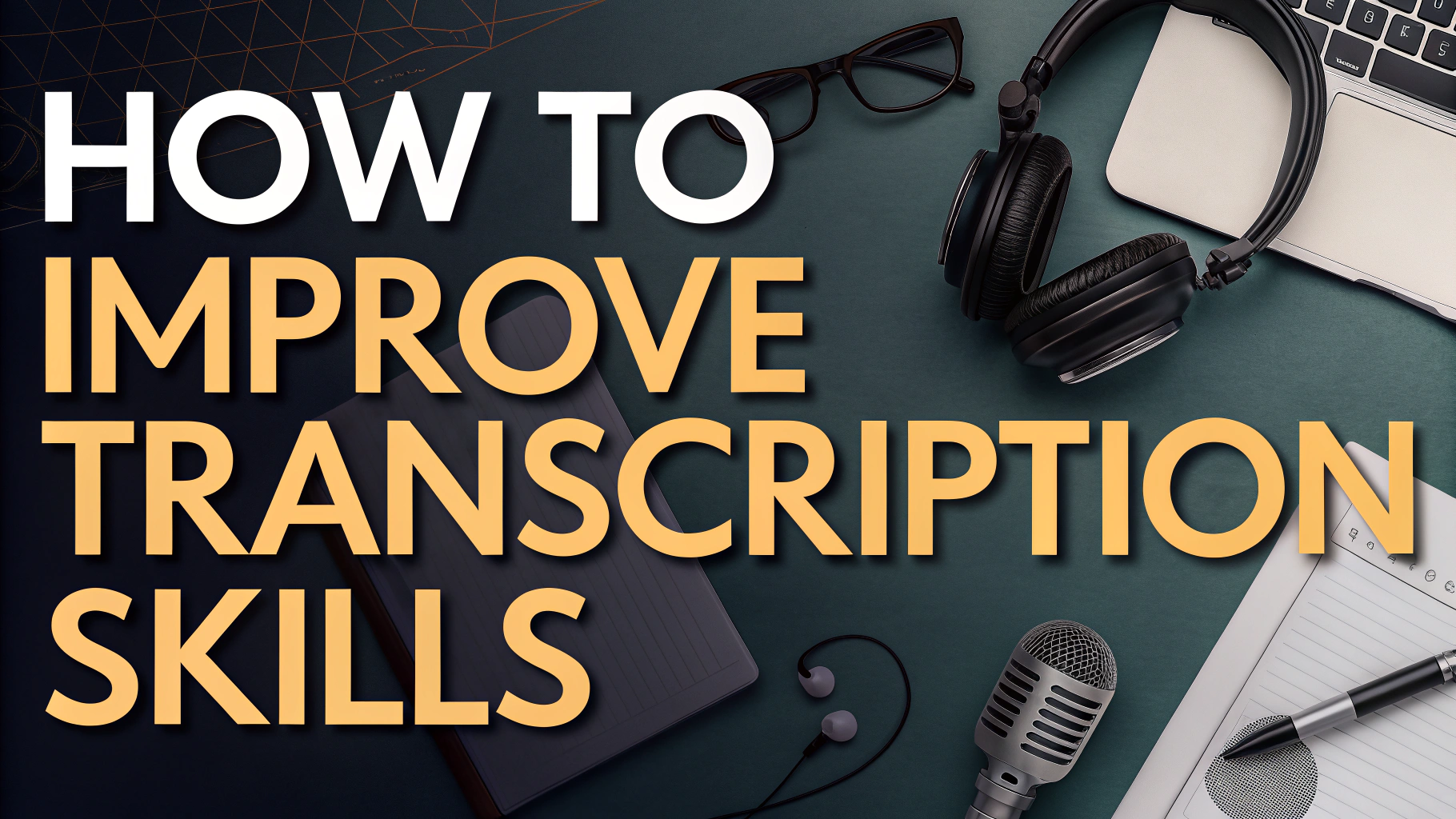To improve your transcription skills, you should focus on three main areas:
1. increasing your typing speed and precisione
2. sharpening your listening and comprehension abilities
3. mastering grammar and punctuation.
In addition, leveraging transcription software and AI tools like VOMO can dramatically boost your efficiency and output quality.
This guide outlines 10 practical strategies to help you become a faster, more accurate, and more confident transcriptionist.
What Are Transcription Skills?
Transcription skills are the abilities required to convert spoken language into written text accurately. Key components include:
- Typing speed and accuracy
- Active listening and audio comprehension
- Grammar, spelling, and punctuation knowledge
- Attention to detail
Improve Your Typing Speed and Accuracy
Faster typing helps you keep up with real-time or playback audio. Here’s how to improve:
Use online tools like Keybr, TypingClub, or 10FastFingers

Keybr
- Website: https://www.keybr.com
- Features: Keybr uses smart algorithms to generate typing exercises that gradually introduce new letters, helping you build muscle memory and keyboard proficiency. It has a clean interface without ads, making it ideal for users who want to build a strong typing foundation.
- Advantages:
- Suitable for long-term practice with progressive difficulty
- Provides real-time statistics (WPM, error rate)
- Supports multiple languages

TypingClub
- Website: https://www.typingclub.com
- Features: TypingClub offers a complete curriculum, from basic finger placement to advanced typing lessons, perfect for students and beginners. It also has gamified elements like achievements and scoring systems.
- Advantages:
- Rich free courses suitable for systematic learning
- Allows account creation to save progress
- Provides teacher and school management features (good for educational settings)

10FastFingers
- Website: https://10fastfingers.com
- Features: This platform is well known for typing speed tests. Users can quickly test their WPM (words per minute) and compete with others worldwide.
- Advantages:
- Easy to start, great for daily speed testing
- Supports multiple languages
- Offers multiplayer competitions and advanced typing tests
Practice 15-30 minutes daily
Focus on reducing errors and increasing consistency
Train Your Listening and Comprehension
Strong listening skills are essential, especially with varying accents or background noise:
- Listen to podcasts or YouTube interviews
- Focus on understanding tone, slang, and fast speech
- Use transcription practice platforms with graded difficulty
Sharpen Grammar and Punctuation
Even if you transcribe word-for-word, poor grammar can make your transcript unclear. To improve:
- Study basic English punctuation rules
- Use tools like Grammarly or Hemingway Editor
- Refer to style guides if you’re doing legal or medical transcription
Grammarly
Grammarly is an AI-powered tool that checks grammar, spelling, and punctuation in real-time, helping you create error-free transcripts quickly and easily.

Hemingway Editor
Hemingway Editor highlights complex sentences and passive voice to improve readability, making your transcripts clear and easy to understand.
Learn to Use Transcription Software
Modern transcription tools can speed up your work and reduce errors:
- Try VOMO, an AI-powered transcription tool with Smart Notes and summarization features
- Use Express Scribe for manual transcription with foot pedal support
- Learn keyboard shortcuts for playback control and timestamps
Practice with Real-Life Audio
Hands-on experience is the best way to learn:
- Transcribe podcasts, news interviews, or TED Talks
- Compare your output with official transcripts
- Start with clear audio, then move to fast-paced or noisy files
Use AI Tools to Assist (Not Replace) Your Skills
AI tools like VOMO can:
- Automatically transcribe and summarize audio
- Save hours of manual typing
- Help you focus on reviewing and editing instead of raw transcription
However, always double-check AI-generated output for names, numbers, and context.
Build a Distraction-Free Workspace
Set yourself up for success:
- Use noise-canceling headphones
- Set up a comfortable desk with an ergonomic keyboard
- Mute phone notifications during work sessions
Join Communities and Take Courses
Learning from others accelerates your growth:
- Explore Reddit forums (like r/Transcription)
- Take online courses (e.g., Udemy, Coursera)
- Ask for feedback on your transcripts
FAQ: Frequently Asked Questions
Q1: How long does it take to improve transcription skills?
With daily practice, most people improve noticeably within 2–4 weeks.
Q2: What’s a good typing speed for transcription work?
Aim for 60–80 WPM with high accuracy.
Q3: Can AI tools like VOMO replace manual transcription?
No—they enhance productivity but still require human review for context, names, and formatting.
Q4: Do I need a certification to become a transcriptionist?
No, but certifications can improve credibility in specialized fields like medical or legal transcription.
Q5: Where can I practice transcription for free?
Start with YouTube videos, TED Talks, or free training sites. Use VOMO to generate transcripts and practice editing them.
Conclusion
Improving your transcription skills is a journey of continuous learning and practice. With the right tools like VOMO and a consistent routine, you can boost your speed, accuracy, and confidence. Ready to take your transcription game to the next level?


